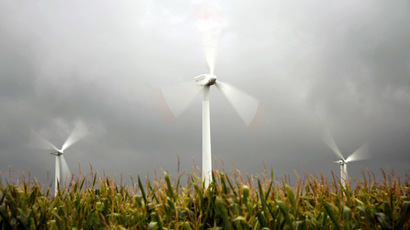UK bank to invest £1bn of green energy in the ocean blue

The UK’s Green Investment Bank (GIB) will raise £1bn to invest in domestic offshore wind farms, tapping into the billion dollar industry of generating renewable energy from ocean winds.
GIB has put £1.3billion into 29 green infrastructure projects since it was started 18 months ago, and is transitioning from simply raising funds for projects to fully investing, the Financial Times reports.
The government-funded green energy incubator has £3.8 billion of public money to invest in ‘greening’ the British economy.
In its 2014 Annual Report, the Edinburgh-based bank said it has raised £3.5 billion of private capital to invest in projects, including biomass boilers in Scottish distilleries, and digestion plants on the outskirts of London.
Not all projects have been successful- two were scrapped due to the potential risks to local wildlife.
“We aim to mobilize investment on a project by project basis but also, through a positive demonstration effect, to improve the attractiveness of the wider sector,” Shaun Kingsbury, the bank’s chief executive, said in the report.
By 2020, the global offshore wind industry is expected to grow to
€130 billion (or about £111 billion)
according to a 2013 report by consultants Roland Berger.

Offshore wind farms that are popping up aren’t all that different from land turbines, except that winds in the ocean are much stronger, producing almost double the output. However, offshore stations are more risky because bad weather can restrict access to energy. Most stations are located within 70 km of the shoreline.
Over 95 percent of offshore wind turbines are located in European waters, and the UK is an attractive site because of shallow waters and strong winds.
The first offshore wind farm was erected in Denmark in 1991, and as of January 24, 2014, 68 offshore stations have been constructed in Europe.
E.ON, one of the UK’s leading energy suppliers, predicts that by 2020, 40 Gigawatts (GW) of wind farm capacity will be installed throughout Europe. At the end of June 2013, Europe’s total combined offshore energy capacity was just over 6 GW.
The UK’s dwindling fossil fuel supplies could be gone in five years, bringing urgency to developing renewables.
However, across Europe renewable energy initiatives face opposition because government subsidies often drive up prices in more traditional industries, like electric and gas.
According to UK industry regulator Ofgem, energy prices have risen 24 percent over the last four years. Still, UK gas and electric prices are the lowest in the EU.














